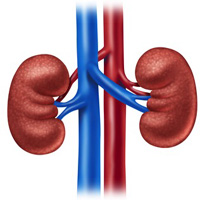 Smart Citations
Smart CitationsSee how this article has been cited at scite.ai
scite shows how a scientific paper has been cited by providing the context of the citation, a classification describing whether it supports, mentions, or contrasts the cited claim, and a label indicating in which section the citation was made.
Stone composition of renal stone formers from different global regions
Objective: To study urinary stone composition patterns in different populations around the world.
Materials and methods: Data were collected by reviewing charts of 1204 adult patients of 10 countries with renal or ureteral stones (> 18 years) in whom a stone analysis was done and available. Any method of stone analysis was accepted, but the methodology had to be registered.
Results: In total, we observed 710 (59%) patients with calcium oxalate, 31 (1%) with calcium phosphate, 161 (13%) with mixed calcium oxalate/calcium phosphate, 15 (1%) with carbapatite, 110 (9%) with uric acid, 7 (< 1%) with urate (ammonium or sodium), 100 (9%) with mixed with uric acid/ calcium oxalate, 56 (5%) with struvite and 14 (1%) with cystine stones. Calciumcontaining stones were the most common in all countries ranging from 43 to 91%. Oxalate stones were more common than phosphate or mixed phosphate/oxalate stones in most countries except Egypt and India. The rate of uric acid containing stones ranged from 4 to 34%, being higher in Egypt, India, Pakistan, Iraq, Poland and Bulgaria. Struvite stones occurred in less than 5% in all countries except India (23%) and Pakistan (16%). Cystine stones occurred in 1% of cases.
Conclusions: The frequency of different types of urinary stones varies from country to country. Calcium-containing stones are prevalent in all countries. The frequency of uric acid containing stones seems to depend mainly on climatic factors, being higher in countries with desert or tropical climates. Dietary patterns can also lead to an increase in the frequency of uric acid containing stones in association with high obesity rates. Struvite stones are decreasing in most countries due to improved health conditions.
How to Cite
PAGEPress has chosen to apply the Creative Commons Attribution NonCommercial 4.0 International License (CC BY-NC 4.0) to all manuscripts to be published.

 https://doi.org/10.4081/aiua.2021.3.307
https://doi.org/10.4081/aiua.2021.3.307




